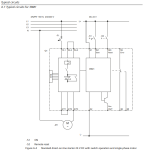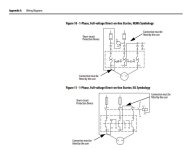the_msp
Lifetime Supporting Member
Any panel I've built with contactors and overloads has been 3 phase.
I'm now quoting on one with some small single-phase loads. Definition of small, one is 0.5Amps FLC and the other 5 Amps FLC.
I've had a look at the Schneider LR97D which has a dip switch on it for single or 3 phase, but it comes with 3 legs. I've seen other discussions online whereby you use a 3 phase contactor but loop the single phase through it so that each contact is seeing the same amperage.
UK, 230V Live-Neutral.
Any other options?
I'm now quoting on one with some small single-phase loads. Definition of small, one is 0.5Amps FLC and the other 5 Amps FLC.
I've had a look at the Schneider LR97D which has a dip switch on it for single or 3 phase, but it comes with 3 legs. I've seen other discussions online whereby you use a 3 phase contactor but loop the single phase through it so that each contact is seeing the same amperage.
UK, 230V Live-Neutral.
Any other options?







